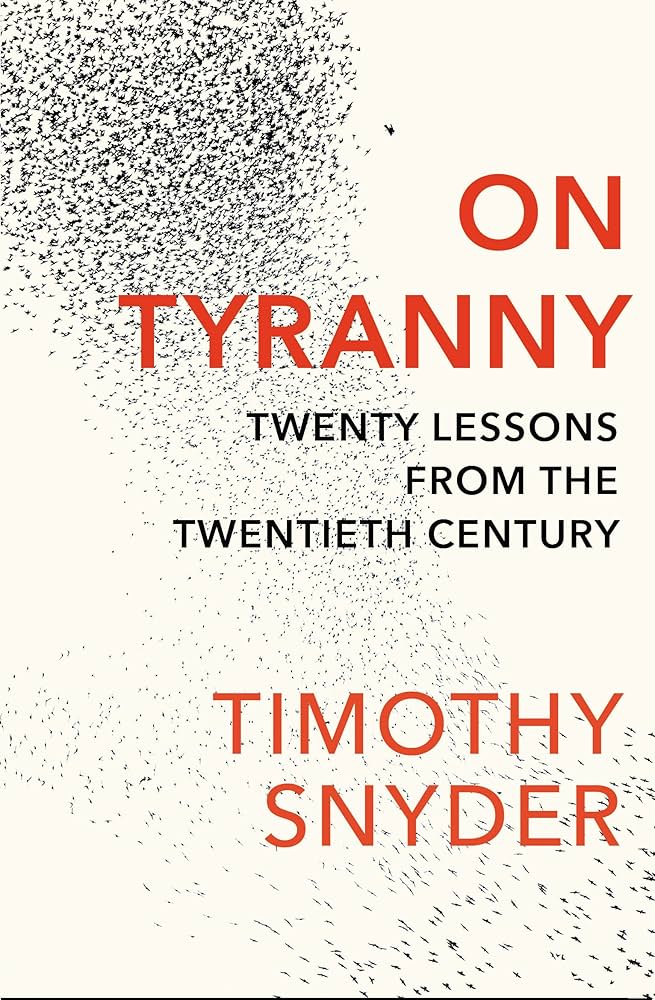On Tyranny Review: Why It Still Matters in 2025

Introduction: Why “On Tyranny” is Essential Reading Today
This On Tyranny review explores why Timothy Snyder’s urgent warnings feel more relevant than ever in today’s fragile political climate. In a time when democratic institutions are under unprecedented pressure, On Tyranny: Twenty Lessons from the Twentieth Century offers a compact yet compelling playbook for resisting authoritarianism. Snyder, a historian at Yale, delivers a clear-eyed warning: tyranny doesn’t arrive with fanfare—it creeps in, disguised as normal, feeding on public complacency and inaction.


Authoritarianism Doesn’t Arrive Overnight
Snyder’s central thesis is chillingly simple: tyranny doesn’t begin with tanks in the streets. It begins when people stop asking questions. It begins when language is corrupted, when violence is normalized, and when political opponents are treated as enemies of the state.
Drawing from the rise of fascism and communism in 20th-century Europe, Snyder outlines how authoritarian leaders seize control—not by force alone, but by eroding truth, exploiting fear, and relying on the compliance of ordinary citizens. These insights are especially resonant in today’s political climate, where democratic backsliding no longer feels theoretical.
The Trump Factor: A Modern Example of Democratic Erosion
While Snyder never names Donald Trump directly in the original 2017 edition, his warnings unmistakably apply to Trump’s leadership style—and to the movement that continues to grow around him.
Key lessons from the book highlight these parallels:
Lesson 3: Beware the One-Party State – undermining electoral integrity and spreading false claims of voter fraud.
Lesson 5: Remember Professional Ethics – encouraging political violence and dismissing legal norms.
Lesson 9: Be Kind to Our Language – manipulating language to sow division and distract from truth.
Lesson 10: Believe in Truth – relentless attacks on the press and denial of objective facts.
These behaviors aren’t isolated. They’re part of a broader pattern that mirrors the early days of authoritarian regimes Snyder documents so well.

On Tyranny Isn’t Just a Warning—It’s a Call to Action
More than a history book, On Tyranny is a resistance manual. Snyder gives us 20 actionable lessons to protect democracy, including:
Don’t obey in advance
Stand out
Defend institutions
Read real news
Investigate
Practice corporeal politics (i.e., show up in person)
Be calm when the unthinkable arrives
These are not abstract principles—they’re practical habits of democratic citizenship. They matter now, perhaps more than ever, as political polarization deepens and disinformation spreads at lightning speed.
Want a real-world example of tyranny in action? Read my breakdown of Putin’s People here.

Critics Say It’s Alarmist—But What If the Alarm is Real?
Some readers accuse Snyder of exaggerating the threat. But the real question is: how many signs of democratic breakdown do we need before we take action?
With Trumpism alive and well, and populist authoritarian movements on the rise globally, Snyder’s work reads less like alarmism and more like foresight. The fire is no longer theoretical—it’s smoldering at democracy’s foundations.
Conclusion: Democracy is Fragile. Fight for It.
On Tyranny is not a comfort read. It’s a wake-up call. Snyder urges readers to reject complacency and reclaim their civic power—before it’s too late.
If you care about democracy, truth, and justice, read this book. Share it. Teach it. And most of all, act on it.
In 2025, On Tyranny remains one of the most urgent books of our time. Because the threats to democracy aren’t just historical—they’re happening right now.
How do we stay awake to history without getting overwhelmed by it?